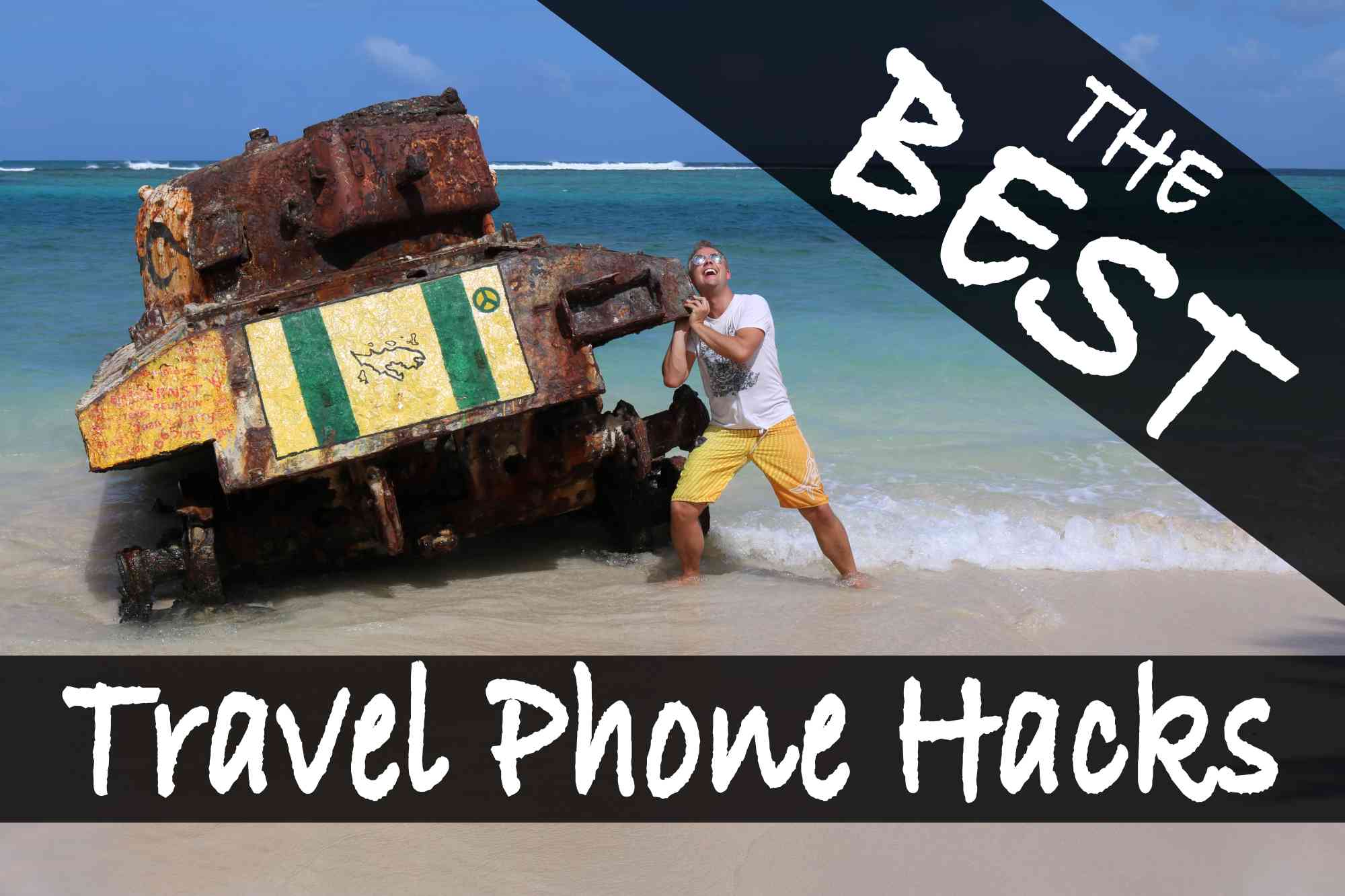Best Travel Phone Hacks
AirDrop
While Android has Bluetooth file sharing, iPhones have AirDrop. Both are the perfect way to send files between laptops and other phones without having access to the internet, or if you don’t want to give out your cell number.
Often photos and videos sent over FaceBook, text message, and other social media are automatically downsampled to a lower quality. Using AirDrop or Bluetooth will ensure the recipient receives the original file in all its hi-def quality!
Find My iPhone & Share Location
Always — always — turn on Find My iPhone so that you can locate your phone on GPS if it goes missing. With a similar feature, open the contact card for your other iPhone buddies and choose to share your location. As long as you have an internet connection (WiFi or cellular), your friends can ping your last known location and see it on a map! Rest assured, you won’t be able to see their location unless they share it with you in a similar fashion. This is an excellent way for family and friends to ensure you’re safe and on track.
Stands & Sticks
There are tons of selfie sticks and stands to choose from online. I’ll always bring two with me: one with telescopic legs so that I can prop my phone up to the right height (also works well as a selfie stick), and a second one with bendable arms to creatively attach it to objects around me. Either way, make sure your stand or stick has Bluetooth connectivity so that you can take photos remotely. Alternatively, learn to use the “timer” on the camera and run, run, run!
Cases
Find a travel case that’s not only durable but also water proof (even if your phone is already water resistant). Water resistance is only good in fresh water. Salt water can still cause problems. If possible, find a case that floats. No matter how water proof your phone is, it’s no good if you drop it to the bottom of the ocean! If you can’t find a case that floats, buy one that you can attach to yourself (such as the ones that hang around your neck) or to something that will float.
Battery Packs & Chargers
Always bring a battery pack capable of fully charging your phone four times from empty. This can be done by checking milliamp rating (mAh). An iPhone XS is around 3,000 mAh, and a battery pack for 26,000 mAh is under $100! This will charge an iPhone XS up to eight full times.
Bring extra charging cables as the wear and tear of using them on the go will be the end of them pretty quickly.
The wall chargers you bring should have an output of at least 2 Amps. While higher voltage may harm your electronics, higher amperage can only provide benefits like faster charging times if the device supports it. USB ports are generally always safe to use. Be mindful of the wall voltage differences from 120 to 240 volts and ensure your adapter can handle it.
Lose your charger? USB is everywhere. Even TVs in hotels often have a data port in the back that can substitute as a makeshift charger!
Headphones
Headphones and an audio splitter to hookup a second pair are a great idea to share music with a friend. On some newer phones, the headphone jack is the same as the charging jack. These splitters can also be used so that it is possible to both charge and listen to music at the same time. Avoid bringing expensive wireless earbuds. Noise cancelling headphones, albeit more expensive and devastating if lost, are fantastic not just for a smoother listening experience, but for blocking out unwanted background audio when trying to sleep.
Quit Apps & Use Low Power Mode
Avoid turning the phone on and off repeatedly as this will suck back battery power. Having a phone constantly in a low service area will also cause the radio transmitter to work extra hard. Use Airplane mode to turn off the transmitter when cell service isn’t available or required (such as when you’re sleeping).
Turn on “Low Power Mode” and decrease display brightness to dramatically improve battery life. You’ll need this extra juice for all the videos and photos you’ll be taking.
Quitting background apps which may be stealing processor power can also help optimize your performance.
Network Selection
Did you know that when you’re roaming you have access to every carrier in that country instead of just one like back home? Go into Settings/Cellular/Network Selection on iPhone and turn off “Automatic.” The search may take a few minutes, but soon a list of available carriers will appear. Take your pick! As smart as smart phones are some days, sometimes the network of “best fit” it will select has incredibly poor data quality and trying the other options can alleviate that issue. Sometimes turning Airplane Mode on and then off again to reconnect to the same cellular network can resolve data issues.
Roaming Passes and SIMs
Prior to travel, buy a roaming pass from your home carrier. These days, they are very affordable. Telus in Canada has an EasyRoam feature for around $10/day. With this, you are able to use your existing Canadian data and voice plan.
If a roaming plan out of your price range, your carrier has the ability to “unlock” your phone and permit it for use with different SIMs. SIMs are identification chips that allow your phone to register on various networks. Often these can be purchased at telecom dealers in the arrivals area of most airports. It’s as simple as popping out your Canadian SIM and putting in the new one.
Often data will be substantially cheaper than a roaming pass, but you will have a different phone number until you put your Canadian one back in. This will prevent you from receiving text messages from your original number, and they may even timeout and get discarded while you’re “offline.”
In some countries, like Cuba, it is not possible to buy a local SIM with data and you will need to scrounge for WiFi where available.





